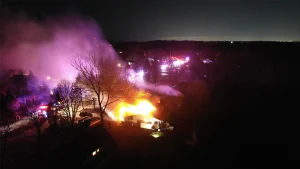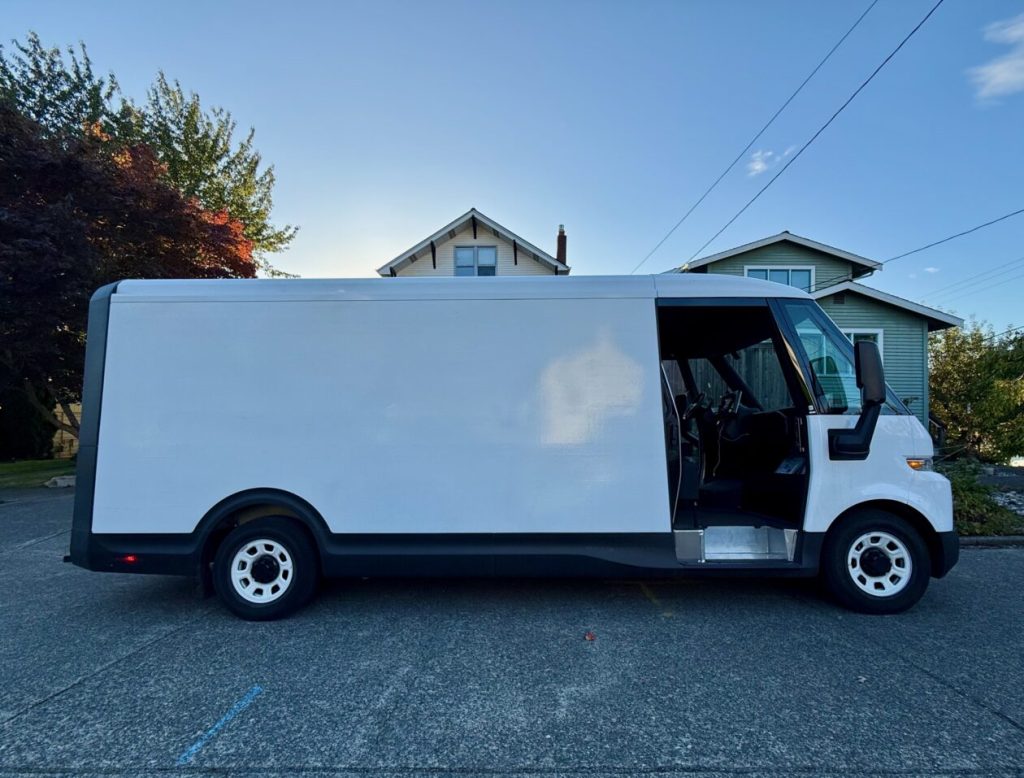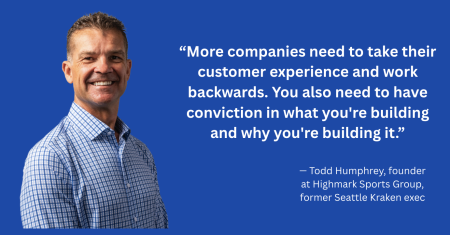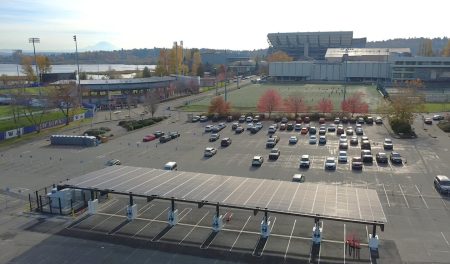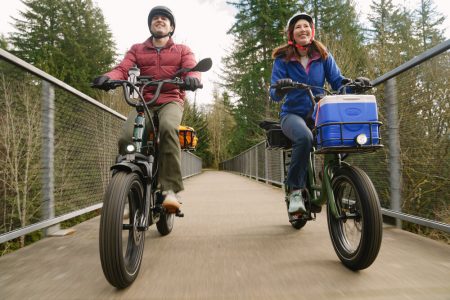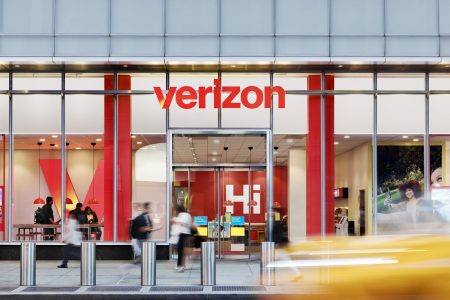Amazon’s Electric Evolution: BrightDrop Vans Join the Delivery Fleet in Seattle
The New Face of Delivery: BrightDrop Vans on Seattle Streets
Seattle residents may have noticed a new addition to their neighborhood delivery scene – boxy white electric vans quietly making their way through the streets carrying Amazon packages. These vehicles represent General Motors’ BrightDrop electric delivery vans, which are now being utilized by Amazon’s independent delivery service partners (DSPs). Recently spotted in Seattle’s Ballard neighborhood, these vans mark a visible shift in Amazon’s delivery infrastructure as the company continues its push toward sustainability. Unlike the familiar blue Amazon-branded fleet with their distinctive Prime logos and quirky slogans, these white electric vehicles present a more understated presence on city streets, though they still serve the same essential function of bringing packages to customers’ doorsteps.
Behind the Wheel: A Driver’s Perspective on the Electric Experience
The BrightDrop vans offer a notably different experience for delivery drivers compared to traditional vehicles. One blue-vested DSP driver shared his positive impressions while making deliveries in Seattle, particularly highlighting the large center “infotainment” display that allowed him to stream music during his route. The driver also appreciated the absence of Amazon’s AI-equipped safety cameras typically installed in delivery vehicles. The interior layout of these particular vans differs from Amazon’s custom-designed fleet – the BrightDrop observed in Seattle featured an open cargo area without the organizational shelving systems found in Amazon’s Rivian vans. This resulted in packages being arranged directly on the van’s floor, representing a simpler approach to package organization. These small but meaningful differences can significantly impact the day-to-day experience of delivery personnel who spend hours behind the wheel.
A Flexible Approach to Delivery Vehicle Acquisition
The presence of BrightDrop vans in Amazon’s delivery ecosystem highlights the company’s multi-faceted approach to building its delivery fleet. While Amazon has made headlines with its massive order of 100,000 custom electric vans from Rivian, the company is simultaneously exploring additional options through various channels. Independent Delivery Service Partners who deliver Amazon packages while wearing Prime-branded uniforms have flexibility in how they secure their delivery vehicles – whether through rentals or other arrangements. According to Amazon, these DSPs can choose from various vehicle options to fulfill their delivery obligations. This creates an opportunity for GM’s BrightDrop vans to enter Amazon’s delivery ecosystem even outside formal corporate fleet acquisitions, demonstrating how Amazon’s vast delivery network incorporates diverse vehicle solutions rather than relying exclusively on a single manufacturer or model.
Amazon’s Broader Electric Vehicle Strategy
The appearance of BrightDrop vans fits within Amazon’s ambitious environmental goals and vehicle electrification strategy. In addition to the DSP-operated BrightDrops, Bloomberg reported that Amazon is separately testing approximately a dozen of these GM electric vans as part of a pilot program aimed at exploring supplementary EV options for its delivery fleet. This testing runs parallel to Amazon’s well-publicized partnership with Rivian, which has already produced significant results. As of June, Amazon reported having more than 25,000 electric Rivian vans operating across the United States. These efforts form part of Amazon’s Climate Pledge commitment to achieve net-zero carbon emissions across its global operations by 2040. The company’s stated goal includes having 100,000 electric delivery vehicles on the road by 2030, representing one of the largest corporate commitments to transportation electrification.
The Evolution of Last-Mile Delivery
The integration of BrightDrop vans into Amazon’s delivery operations represents more than just a new vehicle type – it symbolizes the rapid evolution occurring in last-mile delivery infrastructure. Since beginning the rollout of electric delivery vans in summer 2022, Amazon has been transforming how packages reach consumers’ homes. The shift to electric vehicles addresses multiple concerns simultaneously: reducing carbon emissions, potentially lowering operating costs over vehicle lifetimes, and creating a quieter delivery experience in residential neighborhoods. For customers, the change may be subtle – packages still arrive at their doorsteps, regardless of which type of vehicle delivered them. However, this transition represents a significant technological and operational shift in how goods move through the final stage of their journey from warehouse to home, with implications for urban air quality, noise pollution, and the carbon footprint of e-commerce.
The Future of Delivery: Diversity in Sustainable Solutions
Amazon’s approach to incorporating both Rivian and BrightDrop vehicles suggests that the future of sustainable delivery may involve diverse vehicle solutions rather than standardization around a single platform. By testing and deploying multiple electric vehicle types – whether through corporate fleet acquisitions or DSP-selected vehicles – Amazon creates resilience in its delivery network while gathering real-world performance data across different vehicle designs. This strategy allows the company to evaluate various technologies and manufacturers while scaling up its electric fleet. As more BrightDrop vans and other electric delivery vehicles appear on Seattle streets and in neighborhoods across America, they represent not just a change in how packages are delivered but a broader transition in urban logistics and transportation. The white electric vans quietly making their way through Seattle neighborhoods are just one visible sign of a massive infrastructure transformation taking place beneath the surface of everyday life – one that aims to make the convenience of e-commerce more compatible with environmental sustainability.

